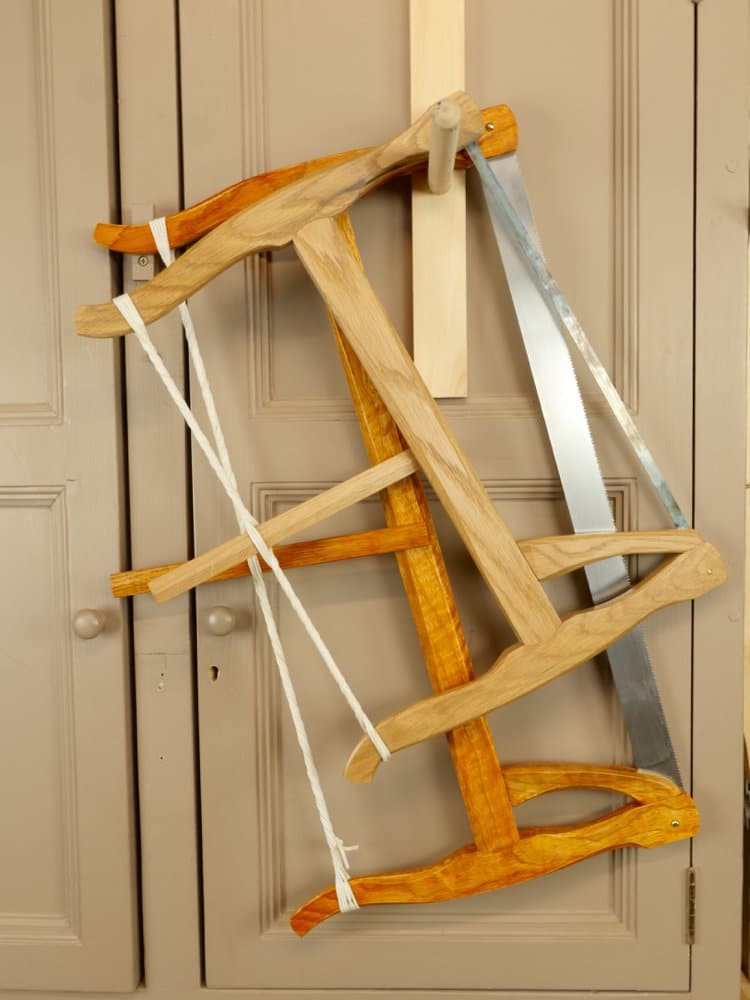Sharpening your frame saw blade

Here is the video to watch via YouTube.

Here is the video to watch via YouTube.
Comments are closed.
You must enter certain information to submit the form on this page. We take the handling of personal information seriously and appreciate your trust in us. Our Privacy Policy sets out important information about us and how we use and protect your personal data and it also explains your legal rights in respect of it. Please click here to read it before you provide any information on this form.
Thanks for the sharpening clarifications with the frame saws. Excellent videos and as always super informative. Much appreciated!
Now if only I could find the files. Lee Valley and Lie Nielson don’t have but a few of the sizes. They say they can’t get them anymore. TWW only has one size.
Looks like a business to get into.
Buy Bahcos, they are as good and so too Tome Fetiera from Portugal.
Do you use the micro-bevel on panel saws etc. as well?
I do. It prolongs the sharpness of the saw’s sharpness markedly.
Dear Paul,
I would be really interested din taking part in one of your wood working classes! How should I do to find some more information about it?
many thanks,
Luca
Our schedule for the year is over with the class I am currently teaching this week. Our schedule for next year is not set as yet but we will hopefully work out some dates and let everyone know over the next month when I will be teaching in the coming year.
Thanks very much for this. I bought what is probably the same blade for the frame saw I built and was disappointed with how it worked. I followed your advise and after reducing the set and sharpening the teeth it now works brilliantly. I also have a crosscut blade that may need the same treatment.
Hi Paul when is the new book due out
Regards Allan
Hello Paul, my question isn’t about sharpening saws, it’s about ripsaws. I recently purchased PAX 4,5 TPI ripsaw and I today tried rip some 2 inch thick rough sawn birch lumber but the saw refused to work. It was getting stucked all the time, no matter how much or little I pressed pressure to the saw? Is 4,5 TPI too little amount teeth per inch? Saw is pretty sharp (as sharp as it is from the factory). Thank You.
-Joni from Finland-
Dear Paul,
Thank you for this video, instructive as usual!
With reference to your previous saw sharpening video detailing the progressive rip-cut pattern, would you suggest using such a pattern on this saw as well? And if so, how would you go about changing the geometry of the teeth on the first couple of inches?
Thank you and greetings from France
Adrian
You can soft-start for a longer section because of the length of the blade but these saws are different in that you tend not to be able to apply as much pressure at the furthest point because of the length. that being so, a more passive rake is less necessary, but you can and I do prefer to.
Paul,
I have watched all 3 videos and am ready to begin making a saw after the masterclasses pattern. I have a question, Highland Woodworking markets a saw with horizontal handles similar to a gent’s saw. This is the type of bow saw I am most familiar with. I have also seen saws with a curved handle projecting below the blade on one side. Making the saw in any of these configurations doesn’t seem difficult, I was wondering if you might discuss the difference in the three styles in use and if one might be better for a specific task compared to the others. You are an amazing resource and I truly appreciate all the knowledge you bestow.
Ron Jones
The saws you mention are all different saws. The one with inline handles are almost always turning saws where the saw blade rotates along its long axis 360-degrees. For much work the coping saw replaced this type of saw because it has such a fine blade and a fine cut. The turning saw can be handy too though and the coping saw did not exactly replace it as the added width gives the ability for longer rips. The saw with the drop handle below the blade was more often used as a buck saw for crosscutting small limbs and branches in a saw buck with the wood being mostly used for fire wood.
The saws I made on masterclasses are more joinery saws for large and small joinery. The wide blade on the one works well when using a longer saw because you get lengthy cuts and beam strength to the blade. The shorter saw with the narrower blade is limited for length but makes an excellent saw for closer, finer work and of course with a metal cutting blade, a great hacksaw.
Thank you very much. Now I have reason to build three saws! Not an unpleasant problem to have.
Ron Jones
I guessed that might be the case here, Ron. I have half a dozen hanging around and I doubt the whole lot cost me more than £25. I have different blades in all of them and now I no longer use the standard hacksaw hardly at all. The one I did for YouTube made from spruce is really rock solid and true to cut for tenons.